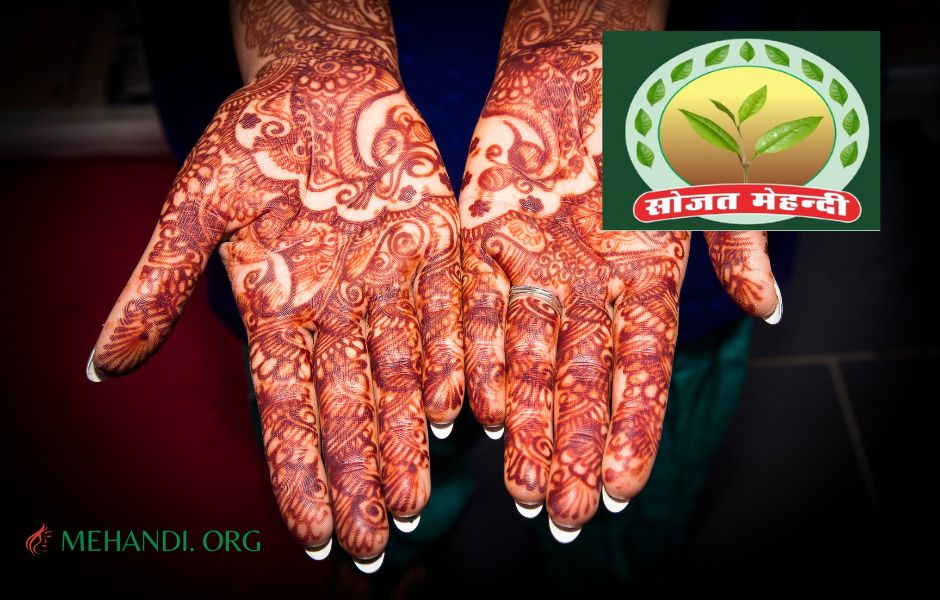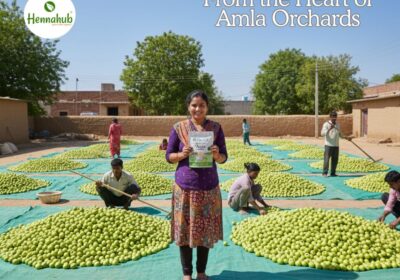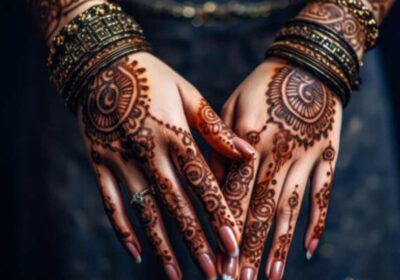The Geographical Indication (GI) certificate for the well-known and sought-after Sojat mehndi was received on Sunday. Rajendra Ratnoo, controller general of patents, designs, and trademarks, travelled from Mumbai on Sunday to Pali to present the certificate to the farmers and merchants of the Sojat Mehndi Kishan Samiti and Mehndi Vyapar Sangh Samiti, which had submitted the application. The brand was added to the GI list in September.
The GI tag is anticipated to be quite effective in deterring substitute items from being sold as Sojat mehndi. Additionally, it is anticipated to boost mehndi exports. Up until this point, word-of-mouth advertising about its high quality was what attracted customers. The government now acknowledges it. According to a senior officer in the industries division, Sojat mehndi is well recognised for its high amount of the red-orange colour lawsone. Color, purity, and dyeing ability all contribute to quality.

“Lawsone is the primary colouring component. Bureau of Indian Standards (BIS) minimums state that the lawsone content for regular mehndi should be 1. However, because Sojat Mehndi’s lawsone content is greater than 2.5, it is much better than the BIS minimal guidelines. In contrast to other types, its high lawsone content has made it peculiar and distinctive, according to Mahendra Kumar Parakh, commissioner of industry and commerce.
The largest henna-producing and cultivating city in India is Sojat, commonly known as “mehndi nagri.” The soil and rainfall patterns in the area give it a unique colour. The high quality has encouraged several local farmers to grow mehndi.
The largest henna-producing and cultivating city in India is Sojat, commonly known as “mehndi nagri.” The soil and rainfall patterns in the area give it a unique colour. The high quality has encouraged several local farmers to grow mehndi.
The Sojat, Marwar Junction, and Jaitara areas produce 90% of India’s mehndi, which is worth $10 billion. General Manager of the District Industries and Commerce Center in Pali, Rajjak Ali, stated: “Over 20,000 people are employed by 160 mehndi factories in the Pali area. The crop is grown on about 40,000 hectares, and the majority of the harvest is sent to Middle Eastern nations.
A certification for certain items or products that are specific to a location is known as a “GI tag,” which is a type of intellectual property. It is an essential component of development that promotes economic interests. These tags serve as a safeguard for the ownership of manufactured items and natural resources. GI tags on products prevent unauthorised use and bring producers money through exports.
Buy GI Tagged Henna powder: Shop Now
Buy GI Tagged Henna powder in bulk: Shop Now
Most searched query about GI Tagged Henna Powder
buy gi tagged henna 1kg
buy gi tagged henna for hair dye
buy gi tagged henna for hair near me
buy gi tagged henna for hair online
Also Read: Which is the best Henna powder for hands





Reading your article helped me a lot and I agree with you. But I still have some doubts, can you clarify for me? I’ll keep an eye out for your answers.